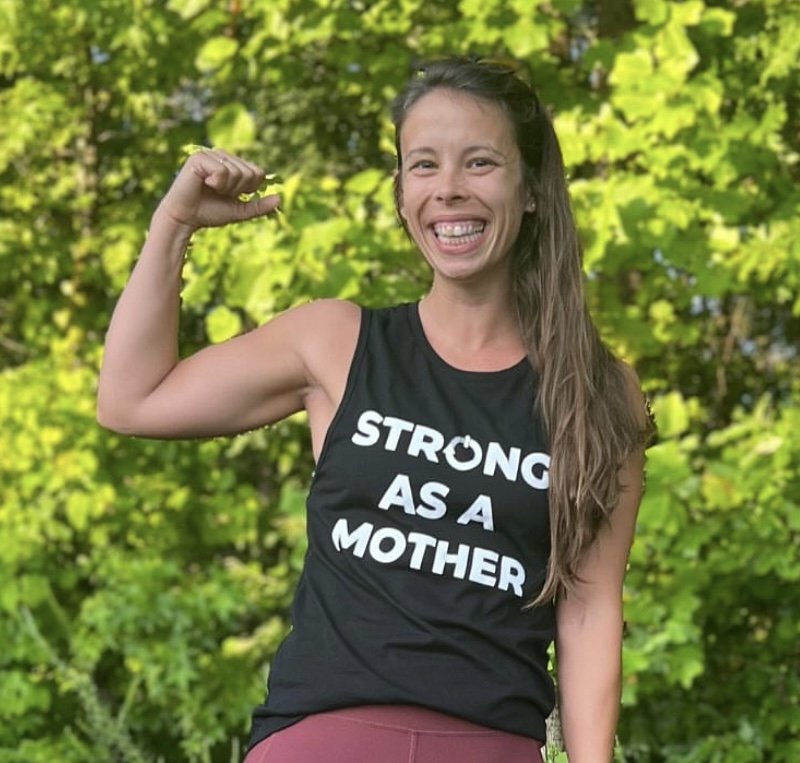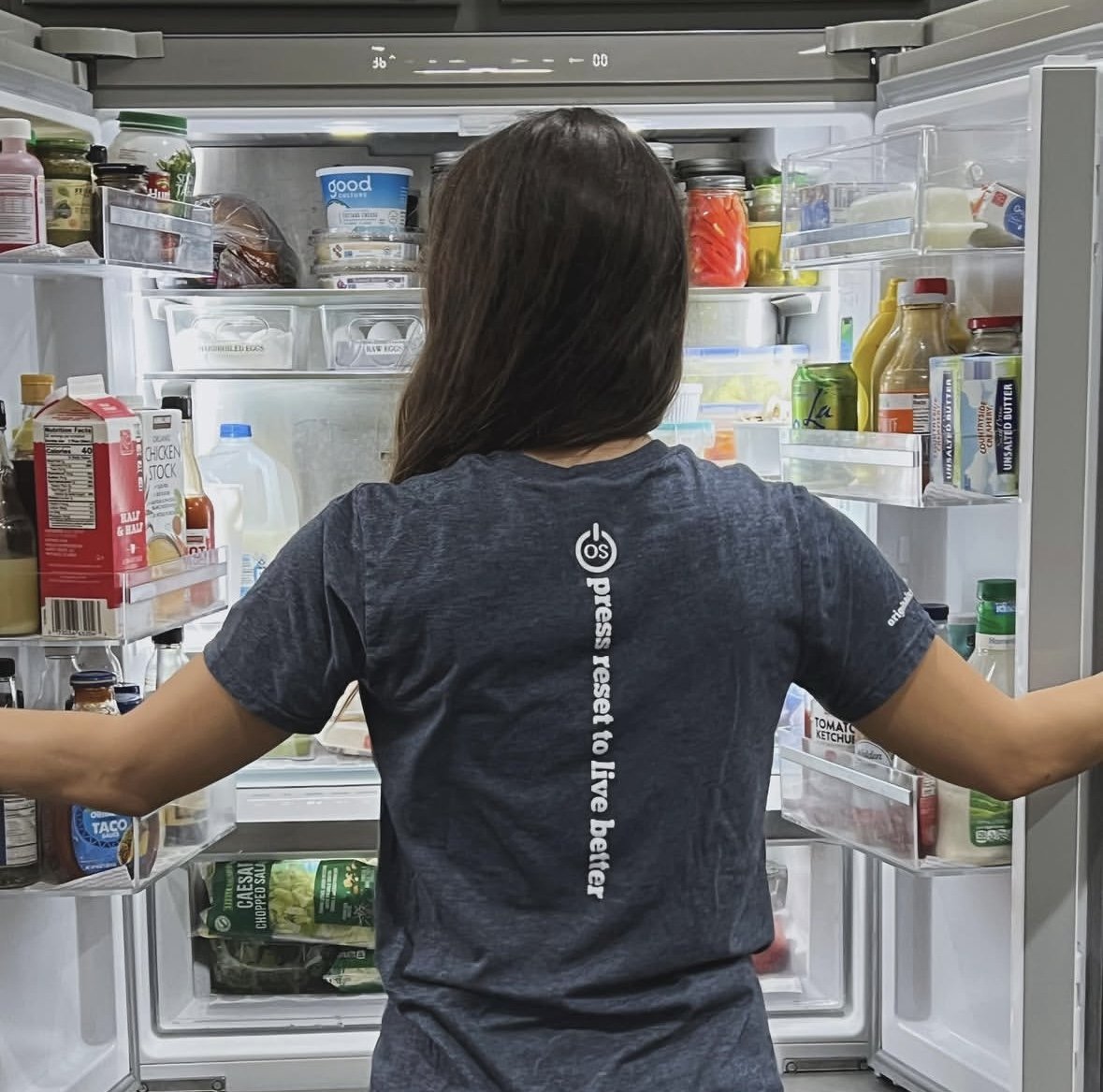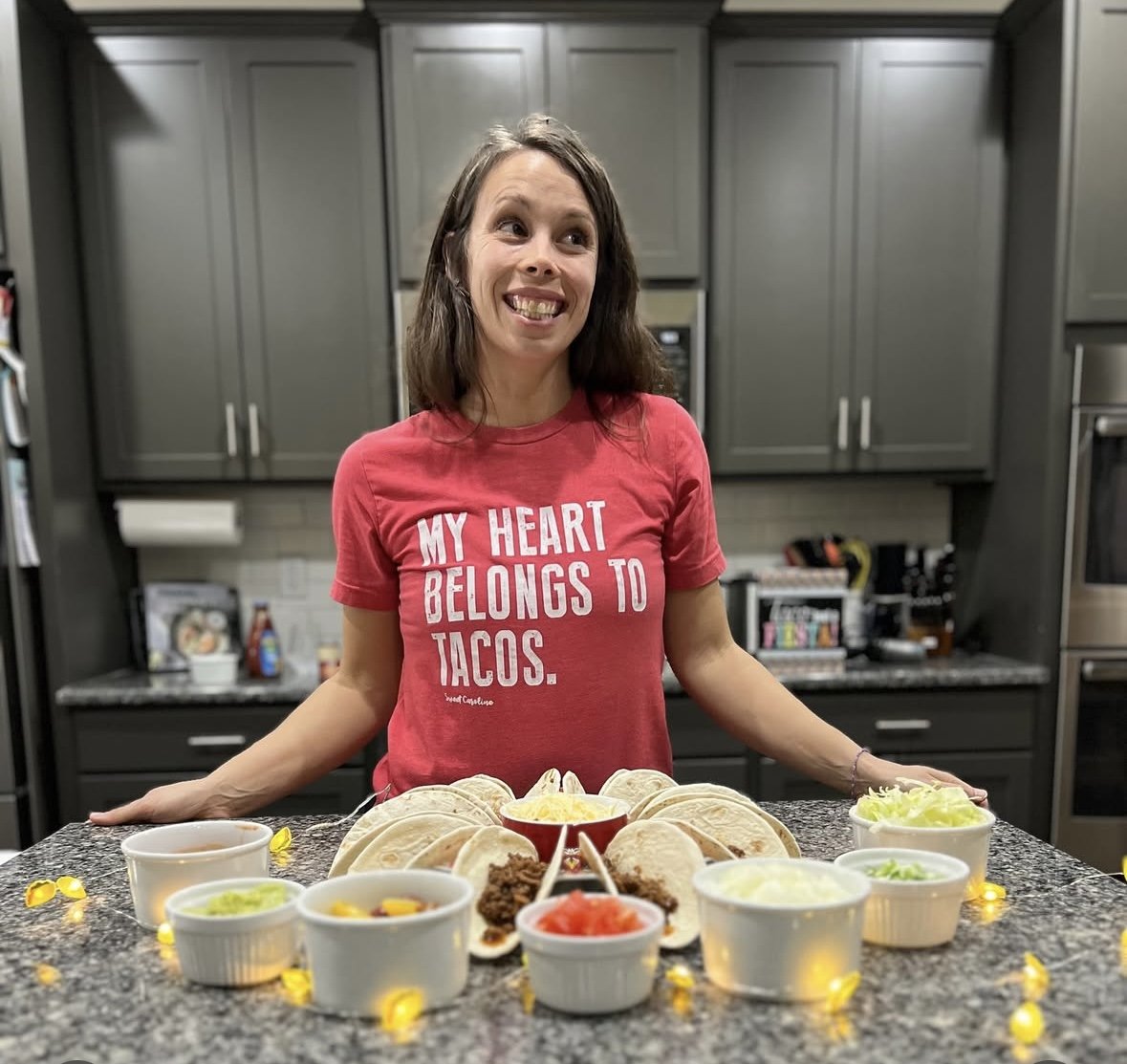An Interview with Kat Entwistle: Helping Kids Build a Healthy Relationship with Food, Hydration, and Their Bodies Through Sports
We are thrilled to welcome Kat Entwistle as our special guest for our June 23 Clinic. Kat is a certified nutritionist with Original Strength Institute in Fuquay-Varina and also the owner of Home Court Pickleball, a growing facility dedicated to active living and community wellness.
Kat is a certified nutrition coach, former athlete, and mom of two girls - including one competitive tumbler who keeps her on her toes (literally and figuratively). She helps busy women in their 40s boost their energy, feel stronger, and finally feel confident in their food decisions - without falling for diet culture nonsense. Her mission? To help women break free from the cycles they grew up with.
As a coach, she is known for her realistic, sustainable approach. She makes nutrition feel doable (and even enjoyable!) in real life, not just on paper. Whether it’s through personalized coaching, group programs, or weekly meal plans, she meets people where they are and helps them build routines that fit the chaos of everyday life.
When she’s not coaching, you’ll find her hanging out with her husband and two girls, watering her plants like they pay rent, reading a good book, or spending time with friends.
We couldn’t pass on the opportunity to pick her brain and learn more about sports and nutrition, so we asked Kat to answer a few common questions we often hear from athletes and parents. Here’s how our conversation went.
Nutrition Basics for Young Athletes
What are the most important things kids should know about food and energy?
Food is fuel for everything they do - whether it's school, sports, hanging out with friends, or just feeling good in their body. When they (and the parents!) eat enough of the right types of food, you have more energy, better focus, and a better mood. Skipping meals or eating mostly ultra-processed snacks can leave you tired, cranky, or struggling to perform your best. Their body isn’t just growing - it's also learning, moving, thinking, and playing. That takes energy!
Key takeaways:
– Carbs give quick energy (think fruit, rice, pasta, oats).
– Protein helps muscles recover and grow (like chicken, eggs, yogurt, beans).
– Fats support your brain and hormones (nuts, seeds, cheese, avocado, olive oil).
– Produce gives your body the vitamins and minerals it needs to run well - like adding oil to an engine!
How can we teach them that food is fuel, not a reward or punishment?
It starts with how we talk about food. Instead of saying, “You were good, so you get a cookie,” try: “Let’s have a snack that’ll help you stay full till dinner.” Or: “Your body worked hard today - let’s give it what it needs.”
Avoid labeling foods as “good” or “bad.” Instead, talk about how some foods help you grow and feel strong, while others are fun to enjoy sometimes but won’t keep you full or focused for long.
Our goal is to build a neutral, respectful relationship with food. One where they understand how different foods work, but don’t assign shame or status to eating.
What does a “balanced plate” look like for a kid before practice or games?
Balanced Plate Breakdown (1–3 hours before activity):
– Carbs (main focus): rice, pasta, bread, fruit, crackers, oatmeal. These give energy for movement.
– Protein (supporting role): chicken, deli turkey, eggs, Greek yogurt, cheese stick. These help with endurance and recovery.
– A little fat: peanut butter, avocado, nuts. These are slow digesting so only have a little to prevent your belly from being too “heavy.”
– Hydration: Water is key! If it’s a longer or sweaty session, a pinch of salt and splash of juice in water can help with electrolytes.
Example snack 30–60 minutes before practice:
Banana with a spoonful of peanut butter
Half a turkey sandwich
Yogurt with granola and berries
Crackers and cheese with water
The goal is to fuel the work ahead, not just “fill the tank.” Think: energy now, recovery later, without the mid-practice crash.
Hydration: What Kids Need to Know
How can kids tell if they’re dehydrated?
Most kids (and adults) don’t recognize dehydration until they’re already feeling off - and by then, performance, focus, and mood are already taking a hit.
Signs they might be dehydrated:
Headache or feeling “foggy”
Tired even if they slept enough
Cranky or sluggish
Muscle cramps
Dark yellow pee (pee should be light like lemonade - not apple juice!)
Dry mouth or lips
Feeling dizzy or “off” at practice
Teach them to do a quick pee check. Checking your pee color is the easiest way to assess your hydration level. Light = you're good. Dark (or you’ve not peed in a while) = drink up.
What are some simple hydration habits that actually stick?
Forget complicated water-tracking charts. Kids need routines that fit into their day without effort.
Sticky hydration habits:
Water bottle with them at school and practice. Make it part of their grab-and-go like a backpack or phone.
Start the day with water. A glass of water before breakfast sets the tone.
Drink at every meal. Stack eating and drinking habits together and drink water at each meal.
Set a “sip cue.” Take a drink after each class change, at lunch, and when walking to the car.
Flavor it up. Add lemon, cucumber, berries, or a splash of juice to make it more fun.
Chug & cheer. Make it a game for younger kids or teams (who can finish their bottle by the end of practice?).
What’s your take on sports drinks? When are they helpful and when are they just sugar?
Here’s the deal: most kids don’t need a sports drink for regular day-to-day activity or casual practice. They’re basically sugary water with salt and coloring. BUT there are times they’re useful and they are still not “bad.”
When sports drinks can help:
Practices or games longer than 60–90 minutes, especially in the heat
Back-to-back events or tournaments
If the kid is a heavy sweater or cramps easily
When they won’t eat but will sip
Smart swap: Mix half sports drink with half water. You still get electrolytes and carbs without the sugar bomb.
Ideas for hydrating in hot weather tournaments or long days of play.
These are marathon days, not sprints—hydration needs to start before the first whistle.
Hydration game plan:
Start hydrated. Big glass of water at breakfast, not just sipping in the car.
Bring more than water. Mix in electrolyte packets (like LMNT, Liquid I.V., or Nuun), diluted sports drinks, or coconut water.
Set a timer. Sip every 20 minutes if they’re not naturally drinking.
Cool the core. Cold drinks, wet towels, or frozen grapes between games help lower body temp.
Snack wisely. Water-rich foods like watermelon, oranges, cucumbers, or popsicles count toward hydration.
Pro tip for parents: Don’t wait for “I’m thirsty.” If they’re asking, they’re already behind.
Body Positivity and Confidence in Athletics
What can we do as coaches to help all kids feel good in their bodies, even if they’re different sizes or skill levels?
– Celebrate effort, not outcome. Praise hustle, improvement, sportsmanship, and teamwork more than wins or physical achievements. “You worked really hard on that drill!” > “You’re so fast!”
– Highlight diverse strengths. Not everyone is the fastest or strongest but someone might be the best encourager, most consistent, or most creative. Name it!
– Avoid comparisons. Refrain from singling out kids as examples based on performance or appearance. Focus on individual progress instead.
– Model body neutrality. No body talk about yourself or others, even in passing. Kids absorb everything.
– Make modifications normal. Present alternative movements or drills as options for anyone, not just for kids who “can’t keep up.” Normalize variety.
– Use inclusive visuals and examples. Represent different body types, abilities, and backgrounds in your materials, posters, or stories you share.
How can we talk about performance and nutrition without making it about weight or appearance?
– Focus on function over form. “Eating protein helps your muscles recover faster” is empowering. “You need to eat this to be lean” is loaded.
– Talk about energy and feeling strong. “What foods help you feel energized?” or “Let’s fuel our bodies to do what we love!”
– Use neutral language around food. No food is “bad” or “junk.” Use terms like “everyday foods” vs. “sometimes foods” if needed. “Good, Better, Best” also work really well here with everything being “good” with the opportunity to eat “better” and “best” to support performance.
– Teach body literacy. Help kids learn to listen to hunger, fullness, and how different foods affect how they feel and perform.
– Don’t assign moral value to food or fitness. It’s not about “being good” or “cheating.” It’s about choices that support goals, energy, and enjoyment.
What language should we use around food and fitness that builds confidence?
– “Strong” > “skinny”
– “Let’s fuel up!” > “Let’s burn it off.”
– “Your body works hard for you - let’s take care of it.”
– “There are lots of ways to be healthy and active.”
– “Everybody is different, and that’s a good thing.”
– “What’s one way you can support your body today?”
– “Let’s set goals based on what you can do, not what you weigh.”
Myths, Fads, and Red Flags
What trends or “rules” are you seeing that concern you when it comes to young athletes?
Oh, where to start? A few big red flags I’m seeing:
“Clean eating” taken too far. Kids (and adults) avoiding entire food groups because they think carbs are “bad” or sugar is “toxic.” Newsflash: carbs = fuel, especially for athletes.
Intermittent fasting for teens (or adults). Hard no. Growing bodies need regular fuel - skipping breakfast before practice doesn’t make you disciplined, it makes you slower, foggier, and crankier.
Supplements over food. Protein powders, creatine, or pre-workouts being used instead of real meals. Let’s build a solid foundation before jumping to powders and pills.
“No pain, no gain” mindset around hunger. Feeling hungry is not weakness. It’s your body’s way of saying, “Hey, I’m doing a lot - fuel me!”
What’s concerning is that these trends sound “disciplined” or “healthy” at first glance. But they’re often rooted in diet culture or misinformation—not performance science.
How do you help families avoid accidentally teaching diet culture to kids?
As noted above, it starts with how we talk about food, bodies, and movement. Some examples of helpful shifts:
Swap “good” vs “bad” food talk with:
“This food helps you stay full longer.”
“That’s more of a fun food—it doesn’t keep you full, but it tastes good!”
Avoid body-focused praise or criticism.
Instead of “You look so fit,” try “You’ve been really strong and consistent lately!”
Don’t tie food to guilt. No “you shouldn’t be eating that” at the dinner table especially not in front of a kid who’s learning to trust their hunger.
Also: modeling matters. If a parent is constantly dieting, talking about needing to “burn off” dessert, or skipping meals, kids absorb that fast even if the words aren’t directed at them.
Are there any food rules you think should be broken?
Absolutely. Here are a few that I’d love to not ever talk about again:
🚫 “You have to clean your plate.”
✅ Teach kids to eat until they’re satisfied, not stuffed. Let them learn hunger and fullness cues.
🚫 “No snacks after 8pm.”
✅ If a kid is active and hungry after practice, they need that recovery fuel before bed. Your body will still digest food that is eaten, no matter the time of day.
🚫 “Carbs make you gain weight.”
✅ Carbs are the primary fuel source for active bodies and brains. Whole grains, fruit, and starchy veggies are MVPs for athletes.
🚫 “Dessert only if you’ve been good.”
✅ All foods can fit. Treats don’t need to be earned like gold stars. That mindset sets the stage for binge/restrict cycles later. You can also include them with dinner to remove novelty - they just become part of a normal, balanced plate.
The bottom line? The more rules we place around food, the more we disconnect kids from listening to their own bodies. Let’s give them the tools to understand food, not fear it.
Empowering Kids to Take Ownership
How can we get kids more involved in their own nutrition — planning, packing snacks, or choosing healthy options?
The key is involvement over perfection. If kids help pick it, prep it, or pack it, they're way more likely to eat it (and feel good about that choice). Here’s how to get them in the game:
Snack Station
Set up a “grab and go” snack drawer or bin with parent-approved options. Let them build their own snack bags from categories:
Protein (cheese stick, hard-boiled egg, trail mix)
Produce (fruit cup, mini bell peppers, apple slices)
Fun (a few pretzels, granola bar, popcorn)
This gives structure and choice - without the daily negotiating.
Give them a say in planning
Let them choose one dinner each week. If they’re younger, give 2-3 healthy options and let them pick. If they’re older, show them how to balance a plate (protein + carb + produce) and let them create a menu.
Involve them in grocery shopping
It doesn’t have to be a whole ordeal. Let them be in charge of choosing fruit for the week or finding a new veggie to try. Bonus points if they help prep it.
Teach the “why” without a lecture
Frame food as fuel for what they care about:
“This helps your muscles recover after practice.”
“Carbs give you energy for school and tumbling.”
“This snack will help your brain stay sharp for your test.”
What age-appropriate tools or routines help kids build confidence in making smart choices?
Honestly, the easiest—and most effective—way to build confidence around nutrition is by using a simple, consistent balanced plate template as a guide. It’s not about perfection, it’s about repetition and routine.
The OSI Eat Strong Balanced Meal Template is the exact tool I use with every single one of my clients, and it works just as well for kids. Print it out. Stick it on the fridge. Refer to it when planning meals and snacks at home, packing lunchboxes, or even choosing foods on the go.
It helps take the guesswork out of what “balanced” actually means and gives kids a visual they can grow with. Over time, they learn how to fuel their bodies in a way that supports school, sports, and all the running around that comes with being a kid.
And the best part? It travels. Whether you’re eating out, on vacation, or raiding a concession stand between games, the same guide applies. It’s a no-pressure way to help kids build smart habits that stick.
What’s one message you hope every kid hears about food and their body?
Food is not good or bad. It’s fuel for everything your body can do: run, play, think, grow, recover, and be awesome. You don’t have to earn food, and you don’t need to feel guilty for enjoying it. Every body is different, and the best thing you can do is learn how to listen to yours, take care of it, and treat it with respect.
Where can families find you or learn more?
You can find me at @coachkatsays on Instagram, where I share practical nutrition tips, meal ideas, and strategies for building energy-boosting habits that actually work in real life.
While I don’t coach kids directly, I work with parents - especially busy moms - who want to feel stronger, more energized, and more confident in their food choices. When parents build better habits, the whole family benefits.
If you’re looking for realistic, non-diet-y support, head to the OSI Nutrition Coaching website to check out coaching options, grab a free resource, or book a discovery call.







